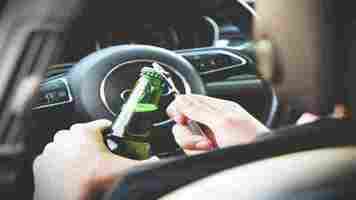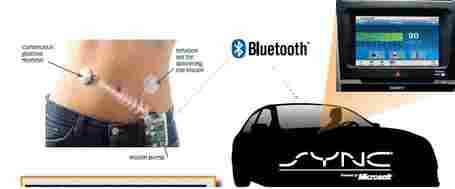Wanna buy an ebike? Here are our top picks from 2021
You’ve survived this weird and difficult year and you’re thinking to treat yourself with an ebike. But choosing the right bike for your isn’t an easy task, so we’re here to help you.

This year, we’ve reviewed a whole bunch of electric two-wheelers, and three of them have really stuck in our minds.


The Brompton Electric is the smallest folding electric bike out there. It weighs 14.5kg (excluding the 2.2kg battery) and measures just 565 x 585 x 270mm when folded, which means that you can bring it along almost everywhere!
So yes, it’s the ebike you almost never have to worry about getting stolen.
At the same time, its lightweight and small design don’t reduce the riding quality. Instead, the ebike even feels more comfortable than some full-size ebikes, thanks to the suspension block built into the rear folding mechanism.
Plus, its 3-way folding frame and extra-long seatpost feel just as solid as any normal bike, and the rim brakes have good enough stopping power and you don’t really miss the disk brakes available on most other ebikes.
It comes with a 250W hub motor, which can take you as fast a 25km/h, while its 300Wh battery gives you enough juice for some 40 to 80km on a single charge.
Prices start at $2,995.
For starters, the Current has a beastly motor with 140Nm of torque and a 45 km/h max speed.
But most importantly, riding it feels so smooth . The Current is the ebike equivalent of silk pajamas — if those pajamas gave you Hulk legs.
Unlike the majority of ebikes we’ve tested, there is virtually no jerkiness to the ride and almost no delay between moving the pedal and the assist kicking in. Whether you’re in assist level one or five, the torque sensor, mid-drive, and acceleration curve make for a super-natural ride.
You know the motor is putting in the work because you can fly up inclines while the motor makes a light hum. And the bike has among the subtlest pedal assist systems we’ve tried, at least among those with this much torque.
No wonder it comes with a $3,299 price tag.
At $1,693, the C-GO 600 offers a Gates Carbon belt drive, a stealthy appearance that doesn’t betray its electric nature, a low weight of 15 kg , and an impressively smooth pedaling experience. It mostly feels like riding a normal single-speed bike, except your legs just got super strong.
Every part of the electric drivetrain appears to have been chosen to prioritize smooth, quiet power delivery. The torque sensor and acceleration curve feel exceptionally natural and responsive, and even at full power, the motor only makes a faint whirr that’s barely audible over road noise.
Generally, the bike’s even quieter and smoother than an “acoustic” bike.
Its 250W motor isn’t crazy powerful, but it’s surely enough to for inner-city trips or to get you on top of small hills, despite the lack of gears.
Plus, if you run out of battery, the C-GO 600 makes for a pretty nice single-speed bike. There is no resistance in the rear wheel whatsoever when the motor isn’t engaged, so the bike is fully pedal-able without the assist.
The transport industry sure as hell wasn’t ready for the end of 3G
This week in the US, AT&T retired its 3G network to make room for newer 5G cellular bands.

While most of our smartphones are embedded with 4G or 5G chips, a lot of transport infrastructure runs on old-school 3G cellular networks . Think of a large number of telematics and IoT-connected devices. As 3G retires, they no longer operate without upgrading to 4G connectivity.
In other words, unless your connected devices support 4G or higher, they’re bricked .
The entire transport ecosystem is in a world of pain, including:
Buses and Trains


American school buses that rely on legacy 3G technology have lost the ability to track and manage their routes. The industry requested a 6-month delay in sunsetting of the network — but to no avail.
This also affects bus networks across the country. In San Francisco , over 650 NextBus transit shelter displays no longer function. Instead, passengers must scan a QR code, make a phone call, or contact the bus company’s Twitter account to find out the schedule.
On top of this, many push-to-talk buttons used by visually-impaired riders are inoperable across the area. The city’s not so smart now, huh?
Trucks and 3G sunsetting
According to CCJ Digital , AT&T’s 3G sunsetting impacts around 350,000 Class 8 trucks.
Laws in long-haul truckers require drivers to use software to record and monitor their hours — and retiring the 3G band makes this software obsolete.
Furthermore, the sunsetting also impacts cross-border trade with Canada and Mexico (who have delayed their 3G retirement to 2025), as American fleets can no longer transmit or receive data between drivers and dispatch.
What does the end of 3G mean for car owners?
Many car makers used 3G in their models as recently as 2021. This includes features such as WiFi hotspots, smartphone app connectivity, voice assistants, in-nav traffic and location data, hands-free calling , automatic crash notification, and remote lock/unlock functions.
Without an upgrade, this is all dead in the water. Here’s where you can find out if your car is affected.
But some specific examples: BMW vehicles from 2019 that are factory-equipped with 3G telematics devices or retrofitted 2G vehicles can no longer receive any ConnectedDrive/BMW Assist services. Worst still, not all BMW vehicles will be eligible for a technology upgrade.
At Toyota , vehicles such as the 2019 4Runner with Toyota Safety Connect enabled can no longer provide services like Automatic Collision Notification, Enhanced Roadside Assistance, Emergency Assistance Button, and Stolen Vehicle Locator.
And a range of Audi vehicles (including some launched in 2019) have lost Connect Care SOS and emergency services. Fortunately, the company is offering Motion for Audi . a free, dealer-installed solution that replaces many of the lost features.
Many OEMs are offering subscription upgrades to higher networks.
For example, Tesla’s offering to do this for a modest fee of $200. Stellantis — home to brands like Chrysler, Dodge, Fiat, Jeep, and Opel — will offer a subscription of appropriate hardware in 2GB of data per month at $9.99, or unlimited data for $29.99 per month.
Good luck charging your EV
Even if you have a newer electric car with updated software, charging might be a problem depending on your provider — with several EV owners on Twitter sharing their experiences encountering out-of-service chargers.
EV charging stations are often networked via 3G, 4G, or 5G cellular data services to provide a range of services.
Operators utilize the connectivity for remote monitoring and managing. While users rely on these networks for things like charger station locator services and credit card payments.
3G sunsetting means chargers depending on AT&T no longer function.
Paul Vosper, CEO of JuiceBar EV charging company, told me that it’s unclear why the 3G network end-of-life schedule seems to have caught some in the industry by surprise.
JuiceBar has been using 4G modems due to the better quality and reliability of IoT on the standard.
Thankfully, the company also offers a Trade-Up Program to all owners of impacted 3G-connected EV chargers.
Geez, get your act together
To be clear, this isn’t unexpected. Telcos started shutting down 2G in 2019, and gave notice for the 2022 3G shutdown.
And for 3G sunsetting, this is just the beginning — Sprint is ending things in March, and T-Mobile in July. Verizon’s giving you until December.
I’m not filled with confidence that the industry will be any more prepared by then. Poor play, folks, poor play.
Future in-car biometrics could detect drunk-driving or a heart attack
Politicians in the US recently released a bipartisan infrastructure bill that includes around $555 billion in new spending to build roads, public transit, and other transport options. Amongst other things, the bill mandates Car OEMs to introduce technology to “passively monitor the performance of a driver of a motor vehicle to accurately identify whether that driver may be impaired.”

This is significant news for companies working on tech to detect drunk-drivers. In June, the Automotive Coalition for Traffic Safety, Inc. (ACTS) announced that a product equipped with new alcohol detection technolog y would be available for open-source licensing in commercial vehicles for the first time in late 2021.
Their tech results from extensive R&D and testing by the DADSS Program , a public-private partnership between automakers and the US Department of Transportation’s National Highway Traffic Safety Administration (NHTSA).
Open-source licensing means that the drunk-driving technology will be available to any product integrator for preparation into fleet vehicles — whether government vehicles, rental cars, or trucking companies. It’s a challenging space, with the risk of false positives and the reality of drunk drivers who will try to cheat the system.
OEM Nissan has created a drunk-driver prevention concept car able to detect the smell of alcohol, which uses cameras to observe driven impairment.
Today cars are already equipped with cameras and sensors to monitor driver alertness. For example, Cadillac’s Super Cruise functionality uses a Driver Attention Camera system to detect that the driver is paying attention to the road ahead before the car will move without the driver’s hands on the wheel. Politicans and lawmakers are yet to determine the legality of alcohol in Level-5 autonomous vehicles .
Beyond drunk-driving: what happened to the promise of the car-as-a-hospital?
Every day, 29 people in the United States die in motor vehicle crashes that involve drunk-driving. But it’s not the first time, technology has been deployed to monitor driver health. About ten years ago, car OEMs were flirting with the idea of embedding biometric sensors in vehicles that can monitor or detect underlying health problems affecting the driver.


In 2011, Ford created a pilot with medical device manufacturer Medtronic to allow Ford SYNC® software to connect via Bluetooth to a Medtronic continuous glucose monitoring device and share glucose levels and trends through audio alerts and visual displays.
Diabetes is a health condition that has long interested tech companies. Low glucose levels can cause people with diabetes driving a car to lose consciousness and, according to research, are behind 20% of car crashes . The in-car health software also enables drivers to monitor sudden temperature changes, pollen levels, and pollution in the air, triggering asthma attacks in many people with asthma.
Ford also worked with Aachen University in Germany to create ECG sensors that could monitor heart health. In practice, such a system could warn a driver to pull over or alert emergency vehicles via vehicle-to-vehicle communication. In the case of an autonomous vehicle, the car could even reroute its map to drive to the nearest hospital.
The same year BMW was supporting researchers at Technische Universitaet Muenchen to create smart steering wheels that monitor stress via heart rate and oxygen saturation levels.
But none of these ideas gained commercial traction. Was it due to the cost of rollout? There’s also the issue of medical accuracy challenges, and the challenges of HIPPA, data privacy, and what these metrics could mean for driver car insurance premiums. Still, it’s foreseeable interest will persist, perhaps with a partnership with wearable health tech.
Can your car detect COVID-19?
In Israel, UVEYE has developed contact-free, emergency-vehicle inspection systems . They recognized that helath providers could use their infrared thermal imaging technology to detect body temperatures from a distance of several meters or more .
This could help healthcare professionals rapidly identify individuals who might require additional COVID-19 testing or treatment. The company equipped health-related fleet operators with the equipment on a not-for-profit basis.
The drunk-driving bill requires the U.S. Transportation Department to set a technology safety standard within three years – and gives automakers at least another two years to comply.
There are many startups and researchers in the breathalyzer and greater biometric-testing space. The technology has evolved significantly since the early 2010’s, especially through advancements in machine learning, and we can expect renewed interest with OEMs to deliver more offerings in the next few years.
Do EVs excite your electrons? Do ebikes get your wheels spinning? Do self-driving cars get you all charged up?
Then you need the weekly SHIFT newsletter in your life. Click here to sign up.